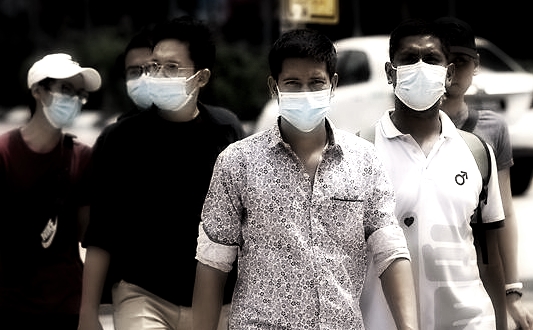Sin Chew Daily
The WHO Strategic and Technical Advisory Group for Infectious Hazards (STAG-IH) has drawn a conclusion from examining data from across the world that the most feasible way to manage the coronavirus pandemic is the deployment of long-term strategies with priority on the prevention of the pandemic's continued expansion and to protect high-risk communities most susceptible to the virus, support research plans to better understand new virus variants, effects of vaccines and how humanity is going to live with the virus in future.
In the meantime, through more precise scientific tracking methods as public health prevention accessory tool in epidemiology for early detection of infection cases and effective tracking of close contacts.
This will help contain the virus and reduce the community transmission risks to more manageable levels.
From the data of COVID-19 deaths in many countries, it is found that the highest morbidity rate happens in people aged 50 and above, and there is a positive correlation between the age of infected individuals and the morbidity rate.
In addition, people suffering from chronic illnesses and those in high-risk groups are the most vulnerable and they need to be protected most. The primary strategy of any country that wishes to lift virus restrictions must be to provide adequate protection to these vulnerable communities.
This should serve as a major reference in Malaysia's forthcoming anti-virus strategies.
WHO has said that the recent spike in new positive cases and fatalities in many countries across the world could be attributed to low vaccination rate and the lifting of mandatory mask-wearing rules as well as other preventive measures, giving the much more infective Delta variant an opportunity to spread quickly in the community.

We can see from here that when the pandemic has progressed to a certain stage, we have to learn to accept the reality of the presence of a persistent virus, and that it is almost impossible for us to revert to our old ways of living any more.
How is the world going to confront such a "new normal" has become a major problem nations must tackle. To completely wipe out the virus may, sadly, no longer be possible. Our only option is to live with the virus!
The number of new positive COVID-19 cases in the country have breached the all-important 10k psychological mark for four consecutive days (as of Friday), reaching an all-time high of 13,215 on Thursday.
It is indeed downright depressing to learn that we have five-digit daily new infection numbers despite the full nationwide lockdown being enforced, especially in Selangor. We have no idea when we can actually move on to the second phase of the national recovery plan.
Looking from a different perspective, the number of new cases is directly associated with the number of screening tests conducted each day.
The health ministry has explained earlier on that the increase in daily new infections is consistent with the number of tests carried out, and this is the result of proactive targeted screenings being carried out all across the country, in particular Klang Valley.
Additionally, it is absolutely necessary to conduct mass screenings on factories and manufacturing employees allowed to work in EMCO areas, with the hope virus carriers could be identified soonest so as to stop the virus from propagating in our community.
We should take cue from the experiences of some countries using scientific approaches to step up the management of specific areas in a bid to minimize community infections while effectively reducing the risk of the virus' propagation.
Early screening should maximize the effects of containing the virus by isolating and treating the carriers. Delayed screening, meanwhile, will allow the virus to spread fast in the community, remarkably adding to the burden of our healthcare system.
The number of active cases has registered another single-day peak of 114,053 on Friday, making up almost 12.77% of cumulative total of confirmed cases thus far. Worryingly, the numbers of daily new deaths have hovered above 100 for so many days in a row, although we have managed to keep the number of ICU cases below 900.
While the numbers of new cases are indeed alarming, we should actually put our focus more on fatalities and hospitalization rate, trying to put these two parameters within manageable levels.
Indeed, we have started a little too late and too slowly in mass screenings, but hopefully with accelerated action now along with our existing strategies, we can keep the virus well in check.
Besides, we must fully adhere to anti-virus protocols, such as avoiding crowded and closed spaces, maintaining safe social distances, constantly washing hands and wearing masks, coupled with mass screenings and accelerated vaccinations, which are the most crucial factors determining our success in this war.
Based on Singapore government's plans, the new normal means we have substantial percentage of immunized population to bring new infections, severe cases and fatalities to a minimum, meaning COVID-19 patients will no longer use up hospital resources, with severe cases drastically reduced, such that we can transit to a new phase of living with the virus.
ADVERTISEMENT
ADVERTISEMENT


































